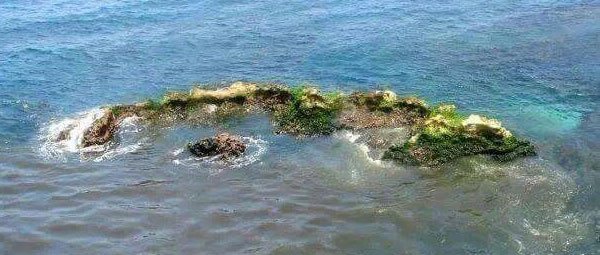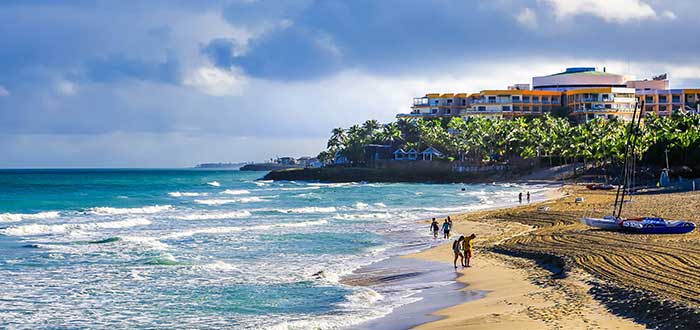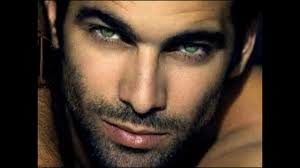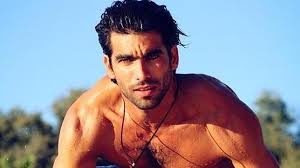ERNEST HEMINGWAY AND HIS LIFE IN CUBA, A LAND HE LOVED.

Ernest Hemingway, on one occasion, expressed in relation to Cuba: “I love this country and I feel at home; and where a man feels at home, apart from the place where he was born, that is the place where he was destined ”.
Hemingway arrived in Cuba in the first half of April 1928. Hemingway was, in the 1930s, a suspicious recidivist tourist who spent every year in Cuba in the months of May, June, and July, which are those of the bullfight. the needle. In 1933 he returned to Cuba to stay and that is when he wrote the first of his chronicles on Cuban themes. From then on he would never dissociate himself from this “long, beautiful and unhappy island”, as he called Cuba in the green hills of Africa. ‘The Old Man and the Sea’ (1952) is par excellence, Hemingway’s “Cuban” novel. Part of the plot of ‘Islands in the Gulf’ (1970) takes place in Cuba. Also in the occasional story and in many of his newspaper articles, there are allusions to the Island. The setting of ‘Have and not have’ (1937) is Cuban to a great extent.

HIS CUBAN LIFE
His first refuge in Havana was the Ambos Mundos hotel, on Obispo street, very close to the port. The then unnumbered room on the fifth floor of that facility, in which he invariably stayed, is preserved intact. At five in the afternoon, after a day of fishing, Hemingway would lock himself in his room, order food, and start writing. He would do it in bed, by hand, and then type the manuscript with hardly any corrections. In 1958, in his famous interview with George Plimpton, he recalled: “The Ambos Mundos, in Havana, was a good place to work.”
There, he slept with his feet facing the east. That way the sun, when he started hitting his face, forced him out of bed. Then, from the window, he scanned the surroundings: the Cathedral, the entrance to the port, Casablanca, the roofs of the buildings. The Cuban flag that flies in the Morro indicated the direction of the wind and the curls of the sea made him suddenly realize if the trade winds were blowing early. The conditions were favorable than for marlin fishing and the narrator, after showering, put on old khaki pants, a random shirt, some dry loafers and went down to breakfast – a glass of Vichy water, another of cold milk, and a slice of bread- before heading to the boat.
Sometimes in Bermuda shorts, with Basque slippers, almost always without socks and with a light shirt, he could be seen walking down Obispo Street. In ‘Islands in the Gulf’ I would evoke the characteristic odors of that route: that of flour stored in sacks and that of flour powder, that of newly opened packing boxes, that of the smell of roasted coffee, “which was a sensation stronger than a drink in the morning ”, the delicious smell of tobacco …
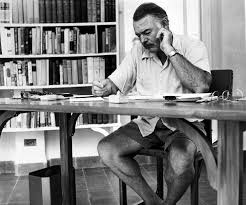
The writer felt comfortable in the Ambos Mundos, due to the central location of the area and the proximity to the port, where he anchored his yacht. But Martha Gelhorn, his third wife, became uncomfortable with the anonymous and depersonalized room and the lack of privacy when friends of her husband visited. It was she who searched and found ‘Finca Vigía’. Hemingway, in the beginning, disliked the place: it was too far from Floridita.
A good part of ‘Islands in the Gulf’ takes place in that Havana bar. In these pages of the novel, the reader sees a character wandering whom the writer calls Liliana the honest. In real life, she called herself Leopoldina, a mulatto prostitute who “made her life” at Floridita and who was the novelist’s, great Cuban love. He would remember her in Islands in the Gulf: “She had a beautiful smile, wonderful dark eyes, and splendid black hair … she had a smooth complexion, like an olive-colored ivory, if such ivory existed, with a slight pink hue …”
La Terraza, a seafood restaurant in the fishing village of Cojímar, was another of Hemingway’s favorite places in Havana. At the Floridita, the place where the writer used to sit – the first armchair on the left of the bar – is revered, and at La Terraza, his usual table, in the left corner, next to the window. “It’s very nice to be here,” says the protagonist of Islands in the Gulf in reference to La Terraza. And in the same novel, the daiquiri is described with its exact flavor and color. “Swallow of shallow waters”, Hemingway defined it.

“I always had good luck writing in Cuba… he expressed in a letter. And shortly after learning that he had won the Nobel Prize, he declared in an interview: “This is a Prize that belongs to Cuba, because my work was thought and created in Cuba, with my people from Cojímar, where I am a citizen. Through all the translations this adoptive homeland is present where I have my books and my home ”.
HEMINGWAY IN HIS ‘FINCA VIGIA’
In 1949, he explained in a chronicle the reasons for his long Cuban residence. He spoke, of course, of the Gulf Stream, “where there is the best and most abundant fishing that I have seen in my life”; of the 18 kinds of mango that were harvested on his property, from his breeding of fighting cocks… and he pointed out carelessly: “One lives on this Island (…) because in the cool of the morning one works better and with greater comfort than anywhere else. ”
https://youtu.be/d_zcqRvXQr0
9Press ^ Here)
Finca La Vigia.
There he concluded ‘For whom the bell tolls’ and wrote’ Across the river and among the trees’, ‘The old man and the sea’, ‘Paris was a feast’, and ‘Islands in the Gulf. Also, another novel that he left unfinished, ‘The Garden of Eden’. And also many articles and chronicles for periodicals, among them the report A bloody summer, about the hand in hand between the bullfighters Antonio Ordóñez and Luis Miguel Dominguín, which he witnessed in Spain the previous year, and which, say his biographers, had many difficulties to conclude.
Ernest Hemingway lived in this house for the last 22 years of his life. When he settled in Finca La Vigía – about 30 minutes from the center of Havana – he was about to conclude ‘For whom the bell tolls’.
He wrote standing up, already in recent years, on a lesser kudú skin, because that way he “thought he more clearly”. He would get up early and only quit his job when he got to a point where he knew exactly what would happen next. Achieving, during a day, some 500 “clean” words was satisfactory for him, and he never directly typed the most difficult passages, but he did do the dialogues.

Finca Vigía was the only truly stable house that the writer had in his life. Mary Welsh, his fourth and last wife, but, as far as she could, order on the estate and on the novelist’s existence. As he complained about how much the visitors bothered him, Mary arranged for the construction of the three-story tower next to the house. The top floor would be Hemingway’s workroom. He went up one day and stayed there for fifteen minutes, during which he insisted, in vain, to compose a sentence. He came down and never used the site to write again. He commented that he couldn’t resist loneliness.
Upon his death, Hemingway’s will was read in Havana. Among other legacies, he transferred the property of Finca Vigía to the Cuban State. The old writer, so reluctant to receive writers in his house, wanted the property to become a meeting place for young intellectuals and artists and to also operate a center for botanical studies. Upon his death, the Finca became a museum of the life that Hemingway had been there for years. By abandoning her forever, he had already walked the path of fame as a writer and earned the Nobel Prize. The estate was then left with his Royal portable, the graves of his dogs, some 50 cats, and the nine thousand volumes that he treasured throughout his life.
But more than a museum, ‘Finca Vigía’ continues to be Hemingway’s home. Full of life. It gives the impression that its owner is not dead, but absent and that at any moment he will return from Floridita or from a hunt.
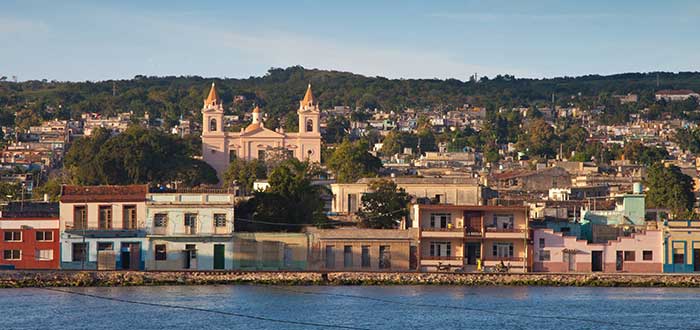
* RECOMIENDENOS A SUS AMISTADES * PREFIERA A NUESTROS SPONSORS.*

 ERNEST HEMINGWAY Y SU VIDA EN CUBA, UNA TIERRA A LA QUE SIEMPRE AMO.
ERNEST HEMINGWAY Y SU VIDA EN CUBA, UNA TIERRA A LA QUE SIEMPRE AMO.
Ernest Hemingway, en una ocasión expresó con relación a Cuba: “Amo este país y me siento como en casa; y allí donde un hombre se siente como en casa, aparte del lugar donde nació, ese es el sitio al que estaba destinado”.
Hemingway llegó a Cuba en la primera quincena de abril de 1928. Hemingway era, en la década de los 30, un turista sospechosamente reincidente que todos los años pasaba en Cuba los meses de mayo, junio y julio, que son los de la corrida de la aguja. En 1933 regresa ya a Cuba para quedarse y es cuando escribió la primera de sus crónicas de tema cubano. A partir de entonces no se desvincularía jamás de esta “isla larga, hermosa y desdichada”, como llamó a Cuba en Las verdes colinas de África. ‘El viejo y el mar’ (1952) es, por excelencia, la novela “cubana” de Hemingway. Parte de la trama de ‘Islas en el golfo’ (1970) transcurre en Cuba. También en alguno que otro cuento y en muchísimos de sus artículos periodísticos hay alusiones a la Isla. El escenario de ‘Tener y no tener’ (1937) es cubano en buena medida.

SU VIDA CUBANA
Su primer refugio habanero fue el hotel Ambos Mundos, en la calle Obispo, muy cerca del puerto. La habitación entonces sin número del quinto piso de esa instalación, en la que se alojó invariablemente, se conserva intacta. A las cinco de la tarde, después de un día de pesquería, Hemingway se encerraba en su pieza, pedía la comida y se ponía a escribir. Lo hacía en la cama, a mano, y luego mecanografiaba el manuscrito sin introducir apenas correcciones. En 1958, en su célebre entrevista con George Plimpton, recordaría: “El Ambos Mundos, en La Habana, fue un buen lugar para trabajar”.
Alli, dormía con los pies hacia el levante. De esa forma el sol, cuando empezaba a golpearle la cara, lo obligaba a abandonar la cama. Entonces, desde la ventana, oteaba el entorno: la Catedral, la entrada del puerto, Casablanca, los tejados de los edificios. La bandera cubana que ondea en el Morro le indicaba la dirección del viento y los rizos del mar lo hacían percatarse de golpe si los alisios soplaban desde temprano. Las condiciones eran favorables entonces para la pesca de la aguja y el narrador, tras ducharse, se ponía un viejo pantalón de caqui, una camisa cualquiera, unos mocasines secos y bajaba a desayunar –un vaso de agua de Vichy, otro de leche fría y una rebanada de pan- antes de dirigirse a la embarcación.
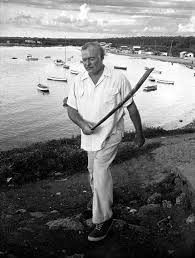
A veces en bermudas, con zapatillas vascas, casi siempre sin calcetines y con una camisa ligera, se le veía caminar por la calle Obispo. En ‘Islas en el Golfo’ evocaría los olores característicos de esa vía: el de la harina almacenada en sacos y el del polvo de harina, el de las cajas de embalaje recién abiertas, el del olor del café tostado, “que era una sensación más fuerte que la de un trago por las mañanas”, el delicioso olor a tabaco…
El escritor se sentía a gusto en el Ambos Mundos, por lo céntrico de la zona y la cercanía con el puerto, donde fondeaba su yate. Pero a Martha Gelhorn, su tercera esposa, comenzaron a incomodarle la habitación anónima y despersonalizada y la falta de privacidad ante la visita de los amigos del marido. Fue ella la que buscó y encontró ‘Finca Vigía’. A Hemingway, al inicio, le desagradó el lugar: quedaba demasiado lejos del Floridita.
Una buena parte de ‘Islas en el Golfo’ transcurre en ese bar habanero. En esas páginas de la novela, el lector ve deambular a un personaje a quien el escritor llama Liliana la honesta. En la vida real se llamó Leopoldina, una prostituta mulata que “hacía la vida” en el Floridita y que fue el gran amor cubano del novelista. La recordaría en Islas en el golfo: “Tenía una hermosa sonrisa, unos ojos oscuros maravillosos y espléndido pelo negro… Tenía un cutis terso, como un marfil color olivo, si tal marfil existiera, con un ligero matiz rosado…”

La Terraza, restaurante marinero del pueblo de pescadores de Cojímar, fue, en La Habana, otro de los sitios preferidos de Hemingway. En el Floridita se reverencia el sitio donde el escritor solía sentarse –la primera butaca de la izquierda de la barra- y en La Terraza, su mesa de siempre, en la esquina izquierda, junto a la ventana. “Es muy agradable estar aquí”, dice el protagonista de Islas en el golfo en alusión a La Terraza. Y en la misma novela se describe al daiquiri con su sabor y color exactos. “Trago de aguas someras”, lo definía Hemingway.
“Yo siempre tuve buena suerte escribiendo en Cuba… expresó en una carta. Y poco después de conocer que había ganado el Premio Nobel, declaró en una entrevista: “Este es un Premio que pertenece a Cuba, porque mi obra fue pensada y creada en Cuba, con mi gente de Cojímar, de donde soy ciudadano. A través de todas las traducciones está presente esta patria adoptiva donde tengo mis libros y mi casa”.
HEMINGWAY EN SU FINCA DE “LA VIGIA”.
En 1949, explicó en una crónica las razones de su larga residencia cubana. Habló, por supuesto, de la Corriente del Golfo, “donde hay la mejor y más abundante pesca que he visto en mi vida”; de las 18 clases de mango que se cosechaban en su propiedad, de su cría de gallos de pelea…y apuntó como al descuido: “Uno vive en esta Isla (…) porque en el fresco de la mañana se trabaja mejor y con mayor comodidad que en cualquier otro sitio.”
https://youtu.be/PAVpCLtoxik
(Presione ^ Aqui)
Finca La Vigia.
Allí concluyó ‘Por quien doblan las campanas’ y escribió ‘A través del río y entre los árboles’, ‘El viejo y el mar’, ‘París era una fiesta’ e ‘Islas en el Golfo. También otra novela que dejó inconclusa, ‘El jardín del Edén’. Y asimismo muchísimos artículos y crónicas para publicaciones periódicas, entre ellos el reportaje Un verano sangriento, acerca del mano a mano entre los toreros Antonio Ordóñez y Luis Miguel Dominguín, que presenció en España el año precedente, y que, dicen sus biógrafos, tuvo muchas dificultades para poder concluir.
Ernest Hemingway vivió en esta casa los últimos 22 años de su vida. Cuando se instaló en la Finca La Vigía –a unos 30 minutos del centro de La Habana- estaba a punto de concluir ‘Por quién doblan las campanas’.
Escribía de pie, ya en los últimos años, sobre una piel de lesser kudú, porque así “pensaba con más claridad”. Se levantaba temprano y solo abandonaba su labor cuando llegaba a un punto en que sabía con exactitud lo que sucedería después. Lograr, durante una jornada, unas 500 palabras “limpias” era para él satisfactorio, y jamás acometía directamente a máquina los pasajes más difíciles, pero sí los diálogos.
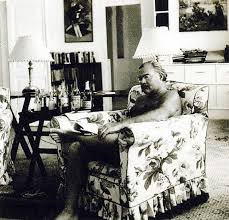
Finca Vigía fue la única casa verdaderamente estable que el escritor tuvo en su vida. Mary Welsh, su cuarta y última esposa, puso, hasta donde pudo, orden en la finca y en la existencia del novelista. Como éste se quejaba de cuánto lo importunaban los visitantes, Mary dispuso la construcción de la torre de tres pisos aledaña a la casa. La última planta sería el cuarto de trabajo de Hemingway. Subió un día y permaneció allí quince minutos, durante los cuales se empeñó, en vano, en redactar una frase. Bajó y nunca más volvió a utilizar el sitio para escribir. Comentó que no podía resistir la soledad.
A su muerte, se leyó en La Habana el testamento de Hemingway. Entre otros legados, traspasaba al Estado cubano la propiedad de Finca Vigía. El viejo escritor, tan remiso a recibir a escritores en su casa, quería que el predio se convirtiera en lugar de reunión de jóvenes intelectuales y artistas y que funcionase allí además un centro de estudios botánicos. A su muerte la Finca se convirtió en un museo de la vida que llevo Hemingway alli por años. Al abandonarla para siempre, había recorrido ya como escritor el camino de la fama y merecido el Premio Nobel. En la finca quedaron entonces su Royal portátil, las tumbas de sus perros, unos 50 gatos y los nueve mil volúmenes que atesoró a lo largo de su vida.
Pero más que un museo, ‘Finca Vigía’ continúa siendo la casa de Hemingway. Llena de vida. Da la impresión de que su propietario no está muerto, sino ausente y que de un momento a otro regresará del Floridita o de una cacería.
Agencies/ Ciro Bianchi/ Lecturas/ Extractos/ Excerpts/ Internet Photos/ YouTube/ Arnoldo Varona/ www.TheCubanHistory.com
THE CUBAN HISTORY, HOLLYWOOD.

* RECOMIENDENOS A SUS AMISTADES * PREFIERA A NUESTROS SPONSORS.*


 GARLIC ROASTED CHICKEN CUBAN STYLE. PHOTOS/VIDEOS.
GARLIC ROASTED CHICKEN CUBAN STYLE. PHOTOS/VIDEOS. POLLO ASADO AL AJO ESTILO CUBANO. PHOTOS/VIDEOS.
POLLO ASADO AL AJO ESTILO CUBANO. PHOTOS/VIDEOS. 




